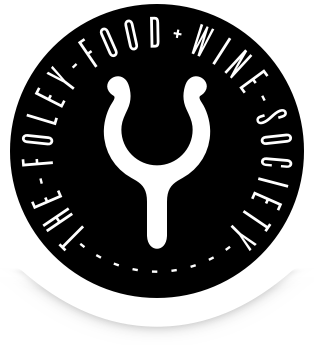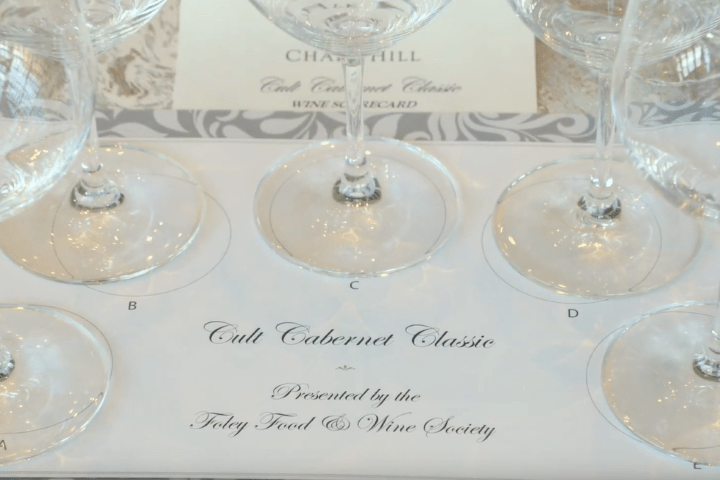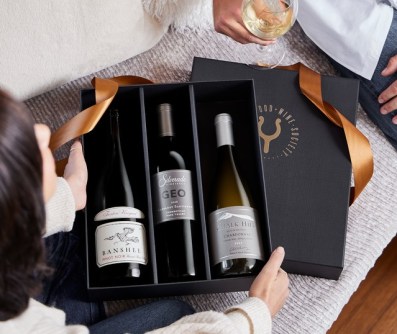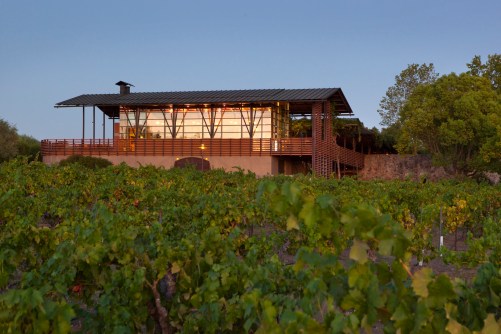On the second-to-last Saturday in February, at Chalk Hill’s stunning Olympic-sized equestrian pavilion, over 100 guests gather under vivid blue skies, basking in a bright Sonoma sun and cool Pacific breezes. After a short reception, those gathered settled into a serious blind tasting of five blockbuster Sonoma Cabernets. Truth be told, it wasn’t all that serious—in fact, it was quite the party.
Like any of our Cult Cab Classic events, even though the wines were ranked, there were no losers—only empty glasses that were once full of dark, ruby-red complex and delicious Cabernet wines.
“It was a really cool experience,” says Jennifer Wescott, FFWS member. “We got to try five different Cabs and compare them, and each one was so different from super tannic and tart to smooth and beautiful, it was really interesting to see the variance and no one at the table had the same favorite.”
Hosted by Quinn Martin, FFWS Senior Hospitality Manager, along with John Mangano, Sr. Hospitality Manager at Merus Wines, and Kenny Koda, Senior Hospitality Manager for several of Foley Family Wines’ Napa properties, there was endless fooling, a host of sports-related jokes and jabs, and a diverse crowd of locals and Foley fans who traveled from out of state.
FFWS member John Reiter found the collective tasting experience helpful because “tasting wine is super suggestive,” he says, adding, “I look for that slight suggestion to let you make that next step.”
Martin, Mangano, and Koda led the guests through each of the five wines—Merus, Fisher, Sebastiani, Lancaster, and Groth—using a simplified version of the Master Sommelier tasting grid. After Koda announced that the wines would all be tasted blind, he gave away a few things, like the fact that all were from the 2016 vintage, and then, given the name of the event suggested that “the smarter people at the table can probably figure out the grape we are tasting,” which drew hearty laughter a beat or so after the comment sank in.
For those who couldn’t attend, we’ve highlighted parts of the spirited discussion below. Read through the collective discourse, tasting notes, and then scroll below to find out which “blind wine” was tasted, and how each wine ranked.
BLIND WINE “A”
Mangano: The wine shows a deep crimson-ruby in the glass. Slow tears indicate a warm climate and elevated alcohol—purple tears indicate to us that this is a thick-skinned grape from a warm climate.
Koda: What John is pointing out is the wine is giving us a good visual clue.
Mangano: Exactly. The color is telling me I’m about to taste something really delicious! On the nose, there are no flaws or stewed fruits. The condition is good and there are lush red currant and cherry and black fruits—not all red wines have red and black fruits—this has a good combination. I’d call it more boysenberry. The fruit is one of the first things we talk about with California wine. We have purple florals and violets and pencil shavings, but does the palate agree with the nose? This is a great example because I’m getting everything I described on the nose on the palate as well. Tannin I call moderate. It’s very elegant. They are in the backseat not taking center stage. Moderate to moderate plus is the flavor intensity. I’m calling New World. I’m not going to Napa because if this was a Napa Cabernet I’d get a little more elevated alcohol and more dark fruits but this is lighter and lusher. It has to be Sonoma.
Hint: Scroll to the bottom of the article to see the results!
BLIND WINE “B”
Martin: The wine shows a crimson color. High concentration. Fast and thicker tears. Big nose here. Leaps out of the glass. The sensation of alcohol versus aromatic pungency—lush fruit condition red cherry and overripe cranberry not a lot of black fruit. Almost an olive note, bay leaf, cardamom, and cinnamon. So, think about this: you have some wines that are fruit-forward, and some that have heavy oak notes, and others that have heavy earthy notes.
Koda: If you smell oak—notes of vanilla, coffee, maple syrup, toast—it’s a good indication that this is an expensive wine because most producers aren’t going to spend the money to build new French oak into their program.
Martin: Who agrees with that statement!? Give it a sip and look at notice the finish. What stands out? The finish lingers and I’m looking at the alcohol that stays on the palate, so I’m calling hot climate. New World vs Old World? Old World producers are looking for typicity year to year. New World winemakers are more focused on quality over style.
Mangano: Degrees of ripeness are usually a good indicator of where a wine is from, right, Kenny?
Koda: Yes, but that’s changing. You are starting to see warmer, lusher climates out of places like Piedmont where that wasn’t the case before—these wines don’t need to age as long as they used to.
BLIND WINE “C”
Mangano: Opaque crimson ruby. Super dark fruit aromatics that seem super ripe. Bright with lots of oak and boysenberry notes with touches of cocoa and cedar spices. On the palate super dark fruit macerated black cherry and blackberry compote with powerful grippy tannins and a touch of savory herbaceous notes. Touches of coffee on the finish too. I’m calling Mountain Cab!!
BLIND WINE “D”
Koda: This is a really lush wine and lots of nice oak. I’m getting cherry, blackberry, and plum with brown spices and savory oak. Some black olive and grippy chalky tannins.
Editor’s note: At this point in the tasting, the enthusiasm was building and the chatter was reaching a feverish pitch. The hosts reeled in the guests and together we all talked through the final wine.
BLIND WINE “E”
The room agreed the wine was ruby in color with medium-plus tears, a medium-plus to deep ruby color. We all nosed varying degrees of freshness and fruit flavors. There were no flaws. One guest offered up “cherry cola and pepper,” notes, while another found “Menthol, cedar, and eucalyptus.” On the palate, Koda found sweeter fruit, lots of tight cedar grippy medium tannins. Medium fruit intensity and alcohol is medium. Medium finish.
Koda: “My favorite thing is happening, the thing that happens at every event—the alcohol is taking over, so tally up your favorites!”
Out came the sliders, the big reveal, and then the biggest perk of all—generous discounts for same-day purchases. And that, as they say, was a cult Cabernet wrap.
THE 2020 CULT CAB CLASSIC RESULTS
First Place: “D” 2016 Merus Coombsville Cabernet Sauvignon, Napa Valley.
Second Place: “C” 2016 Fisher Vineyards Wedding Vineyard Cabernet Sauvignon, Sonoma County.
Third Place: “E” 2016 Sebastiani Cherryblock Cabernet Sauvignon, Sonoma Valley.
Fourth Place: “A” 2016 Lancaster Estate Cabernet Sauvignon, Alexander Valley, Sonoma County.
Fifth Place: “B” 2016 Groth Reserve Oakville Cabernet Sauvignon, Napa Valley.




